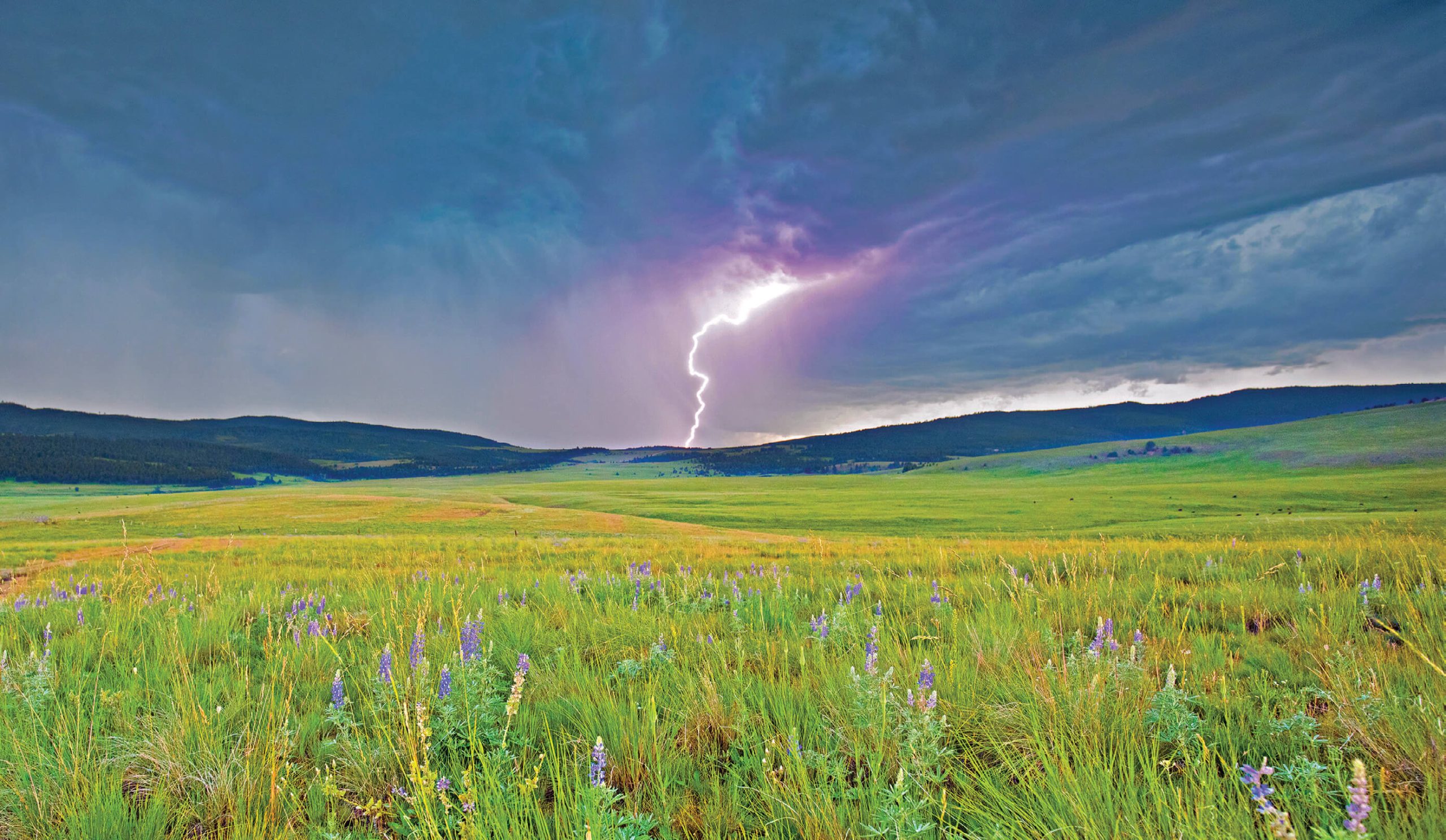
01 Jun From the Editor: A Song of Hope
In the secluded Montana valley where I live, summer has erupted in a crescendo. It began with the echoes of geese and twitters of mountain bluebirds, which were followed closely by the thunderous calls of sandhill cranes and murmurs of croaking frogs. These days, the season’s melody harmonizes with a frequent mist that envelopes the earth at night, only to be ushered away by the morning’s radiant sun coaxing blades of grass and flower stalks to rise upward toward the sky.
A common metaphor, spring is indeed a promise of hope. And in the Northern Rocky Mountains, where the song of summer is as lively as it is short, traces of this vernal hope remain.
In this issue, writer and photographer Jeff Erickson shares the hope he found along an old dirt road in Montana. On the banks of Big Sheep Creek, fully immersed in the landscape, geology, history, and ecology of the place, Erickson writes that darkness descended, yielding bats, planets, and stars. But rather than be consumed by the dark (and the weighty challenges faced by society), he experienced a profound sense of hope.
Erickson’s journey through Big Sheep Creek — learning and exploring the area’s secrets — is an example of what “Reading the West” columnist Marc Beaudin describes as a path forward in his review of Dan Flores’ Wild New World: The Epic Story of Animals and People in America. By relearning our relationship with the flora and fauna of this world, we’ll forge a hopeful future — one where lands remain untrammeled, plants thrive with biodiversity, animals are yet wild, and humans have a joyous place within it all.
The pages of this issue emit frequent notes of relearning and rethinking. In “Encounters with Golden Eagles,” filmmaker David Rohm shares his take on what it means to learn, recognizing the value in calling upon a diverse group of sources that include Indigenous perspectives. Similarly, in “The Grandeur of this Land,” writer Doug Schmittou provides readers with an in-depth study of some of the Rocky Mountains’ most cherished landmarks, revealing the deep history and sacred relationships Indigenous peoples share with these beautiful landscapes. In both cases, Rohm and Schmittou embrace the awakening.
Additionally, Michele Corriel documents Montana artist Lane Timothy’s re-exploration of his craft, Lyndel Meikle dives deep into mining history, and Kris Millgate writes about what it takes to help grizzly bears thrive. Certainly, as people continue to explore their places in this world, and particularly the Rocky Mountains, hope abounds — the examples are endless.
In “The Sound of an Old Forest,” Rick Bass astutely writes, “to live in Montana is to risk being perpetually gobsmacked by digressions. There’s so much bounty; so much beauty. How does one avoid existing in a state of constant tizz? (Surely the only answer is to slow down.)”
And so, I invite readers to revel. To slow down and heed the song. To take in summer’s Rocky Mountain opus.




No Comments